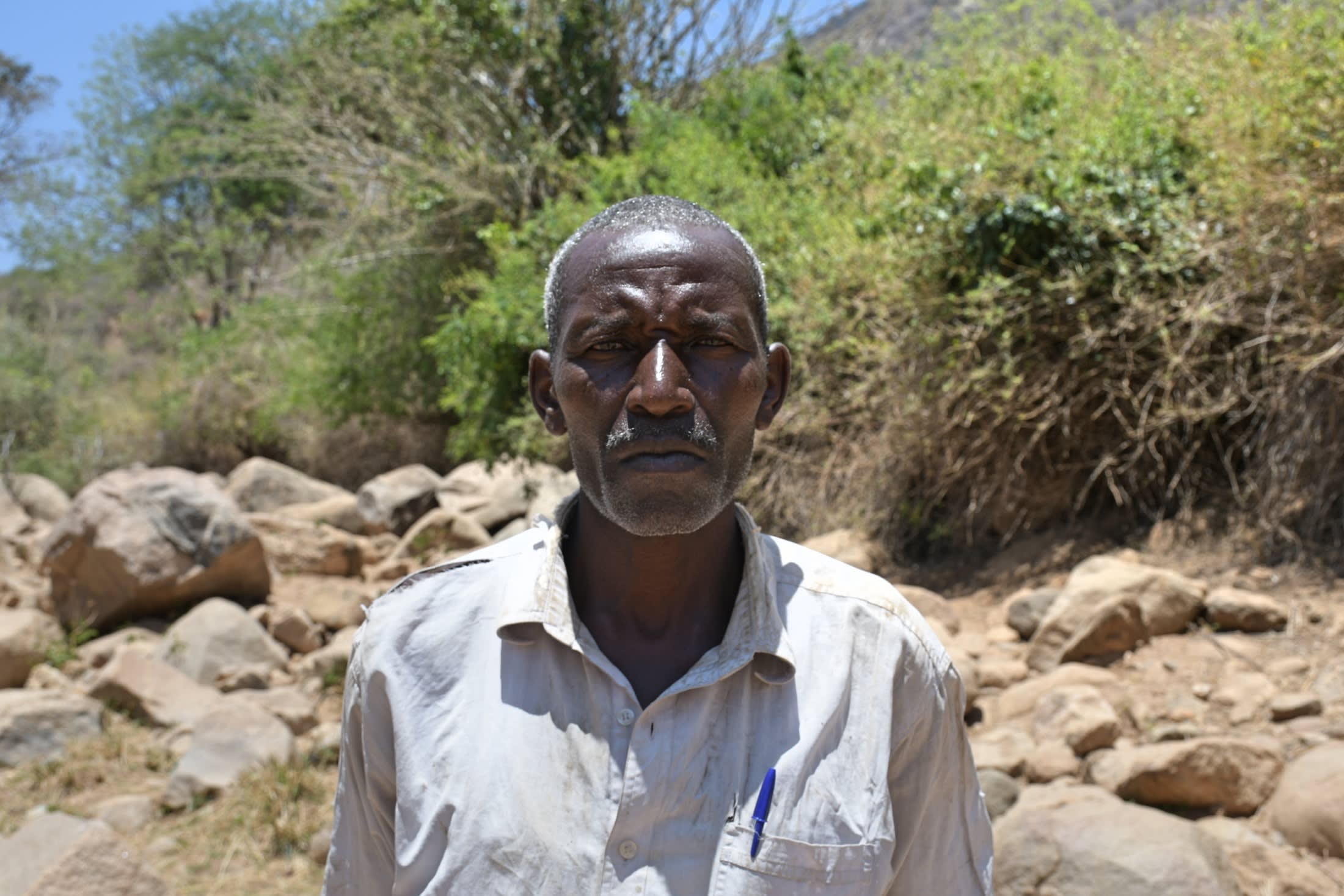The 500 people of the Kanyoeni Community struggle to access sufficient water. They primarily utilize a scoop hole (seen below) open to contamination. Though they also have access to a shallow well, most have a steep, 6-mile-long walk one way to get there.

Field Officer Alex Koech said, "Life in Kanyoeni village begins in the wee hours of the morning when adults visit the scoop holes or the protected shallow well to acquire water for their various families. They have to walk up to 10 kilometers (6 miles) while using donkeys to ferry the water to their homes. They can only make one trip due to the lengthy distance. When they return home, they focus on farming, laundry cleaning, collecting firewood, milking the cattle, and other duties before the day ends."

65-year-old farmer John Mutambu (seen below) shared, "Both the shallow well and scoop hole are far from my home, and I spend more than 5 hours [a day] fetching water, leaving me exhausted. My cattle and goats also offer poor yields because of the exhaustion when walking to drink water. It's also difficult to practice regular hygiene because we have to use the available water sparingly."

Children face the same exhaustion adults do; attempting to collect water often takes all their time, making it impossible for them to attend school regularly.
13-year-old Patrick M. (below on the right) shared his experience. He said, "It is very tiring to draw water from the current sources, and I return home feeling exhausted. I have to bear with hunger [because] there is no water to cook [with] at home. I also have to skip school, like today, because I did not have water to carry to school."

Life is dreary for the people of the Kanyeoni Community. They exhaust themselves by collecting meager amounts of water daily to do it again the next day. Without easy access to reliable water, they will stay stuck in a vicious cycle, unable to get ahead in life.
The solar pump will push water from a sand dam through a piped system to a kiosk in a central part of the community to create a new water point, enabling further water distribution and access for the people living in the area. The water is pumped to storage tanks on an elevated platform that is connected to taps where people can fill their water containers as needed.
The sand dam is mature enough to provide a steady flow of water that will breathe life into the Kanyeoni Community. Installing the solar pump and kiosk will give community members a chance to use significantly less effort to collect water so they have time and energy left to do other important things.
The Proposed Solution, Determined Together...
At The Water Project, everyone has a part in conversations and solutions. We operate in transparency, believing it benefits everyone. We expect reliability from one another as well as our water solutions. Everyone involved makes this possible through hard work and dedication.
In a joint discovery process, community members determine their most advantageous water solution alongside our technical experts. Read more specifics about this solution on the What We're Building tab of this project page. Then, community members lend their support by collecting needed construction materials (sometimes for months ahead of time!), providing labor alongside our artisans, sheltering and feeding the builders, and supplying additional resources.
Water Access for Everyone
This water project is one piece in a large puzzle. In Kenya, Sierra Leone, and Uganda, we're working toward complete coverage of reliable, maintained water sources that guarantee public access now and in the future within a 30-minute round trip for each community, household, school, and health center. One day, we hope to report that this has been achieved!
Training on Health, Hygiene & More
With the community's input, we've identified topics where training will increase positive health outcomes at personal, household, and community levels. We'll coordinate with them to find the best training date. Some examples of what we train communities on are:
- Improved hygiene, health, and sanitation habits
- Safe water handling, storage & treatment
- Disease prevention and proper handwashing
- Income-generation
- Community leadership, governance, & election of a water committee
- Operation and maintenance of the water point

 Solar Pump
Solar Pump
 Rehabilitation Project
Rehabilitation Project














